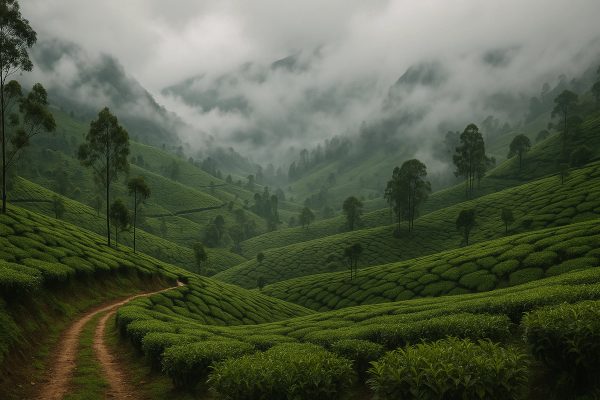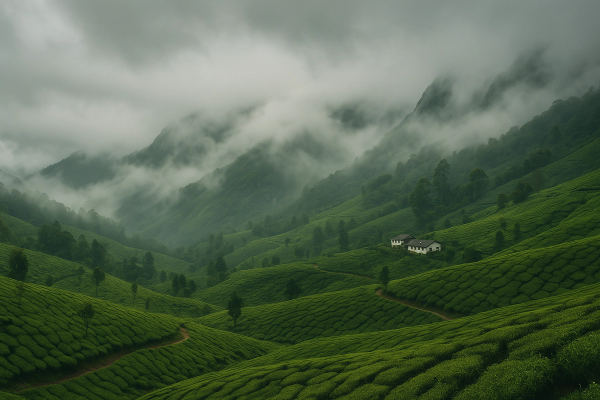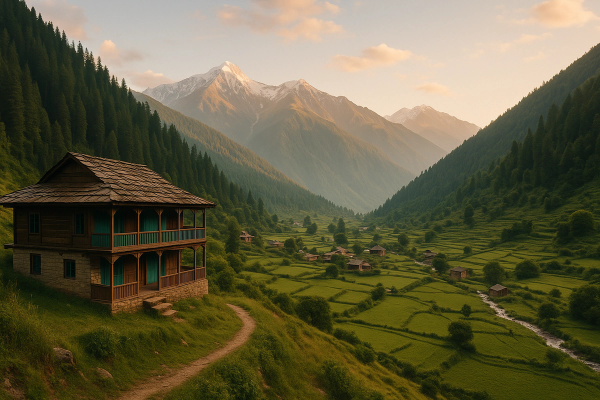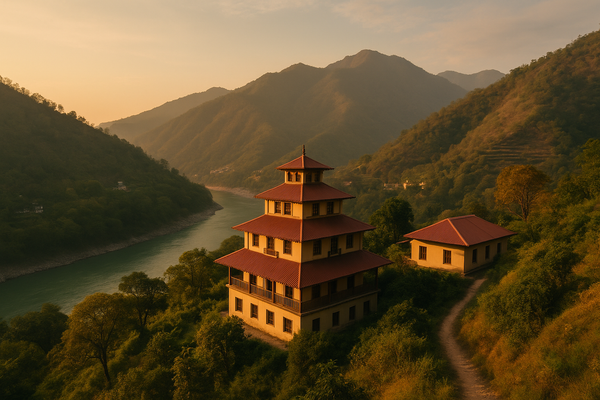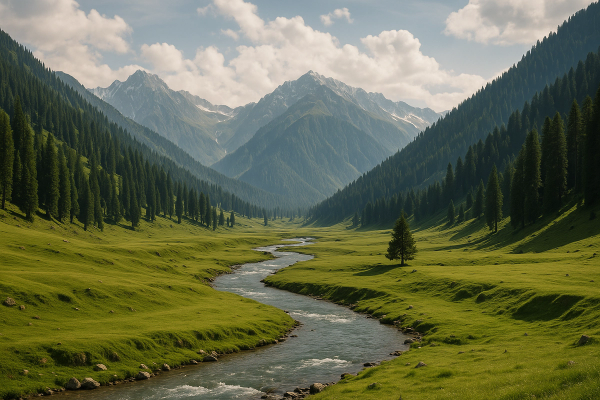Leh Ladakh Culture and Local Life: a very real guide for Indian travelers (from someone who actually went)#
So I finally did it. Packed a small rucksack, one slightly overconfident jacket, and landed in Leh with a head full of reels and a heart that honestly wasn't ready. The first breath there hits different — thinner, colder, cleaner — and you go, oh, this place means business. The mountains aren’t just scenery. They watch you. And the people… gentle, tough, funny in that quiet way. Ladakh isn’t a “trip”. It’s like staying at someone else’s home, where you better respect the house rules.¶
First things first: altitude is no joke, yaar#
Leh sits around 3,500 meters. If you fly in, please don’t be a hero on Day 1. I made the mistake of strolling to Leh market “just for soup” and came back with a headache pounding like a dhol. Rest 24 hours minimum. Sip warm water. No alcohol. Light food. If needed, carry Diamox after talking to your doc. Most hotels keep oximeters and oxygen cylinders on standby. AMS can ruin your plan faster than you can say Nubra.¶
How to reach and when to go (without drama)#
Flights are the easiest from Delhi year-round. You also get seasonal directs from Mumbai, Chandigarh, sometimes Srinagar. Road trips are iconic though. Srinagar–Leh highway usually opens by May and runs till Nov-ish depending on snow. Manali–Leh, thanks to Atal Tunnel, gets accessible earlier but proper window is June to Sept. Monsoon doesn’t pound Ladakh like the plains, but it does mess with connecting routes, so keep buffer days. The golden window for most folks is mid-June to mid-September. Shoulder seasons — late April, May, and October — are beautiful if you can handle cold and fewer services.¶
Permits, phone network, and those tiny practicalities no one tells you#
As of 2025, Indian citizens don’t need the old Inner Line Permit for most tourist circuits in Ladakh. You still have to carry ID everywhere and pay the Environment/Green fee to the local council, which you can sort online or in Leh. Some border areas like Hanle, Umling La, Chushul belt can have special restrictions that change — your hotel or a local agent will give the real-time truth. Foreign nationals still need Protected Area Permits for several routes.¶
Only postpaid SIMs work in Ladakh. Jio and Airtel are decent in Leh and parts of Nubra. Pangong, Hanle, Turtuk, Zanskar — expect patchy network or none. UPI works in Leh and bigger villages, but it can drop. Carry cash. ATMs exist in Leh, and Diskit too, but queues happen. Oh and drones are sensitive business here because border areas — assume you need permission and don’t fly near monasteries or army posts, bas.¶
Culture basics: little gestures matter a lot here#
Ladakh is largely Buddhist with deep Tibetan influence, and also has lovely Balti Muslim villages like Turtuk. In monasteries: remove shoes, dress modest, walk clockwise around stupas and mani walls, don’t touch prayer flags or photography during prayers unless the lama says ok. People are soft-spoken. Smile, say julley, and be patient. Things move at mountain speed. Which is to say, slower than your city brain wants. Trust me, that’s the whole point.¶
Local life moments that stuck with me#
One evening in a Leh homestay, aunty handed me butter tea. I was, um, suspicious. It tastes like… salty soup meets tea. But with the cold, it works. Another day in Turtuk, a kid taught me how to crack open apricot kernels. The inside tastes like almond, tiny miracle. In Diskit, I watched old men spin prayer wheels and gossip like Indian uncles anywhere — just calmer. In Hanle, the sky is so black-blue you forget cities exist. The silence there? It’s loud. Also, you don’t switch on white lights outdoors after dark. Red light only. Stargazer code.¶
Where to stay and what it actually costs#
Leh has everything now — backpacker hostels, cute cafes, boutique hotels, eco-stays with solar heating. A realistic range: budget rooms 800–1,500 per night, mid-range 3,000–7,000, boutique 8,000–15,000, and luxury if you want to burn cash. Pangong and Nubra have camps and cottages around 2,500–6,000 for a tent or room. Homestays in villages like Turtuk, Hanle, Hunder, Alchi are 1,000–2,500 per person with meals, and honestly, they’re my favourite because you actually learn something over dinner.¶
What to eat (other than maggi, ya) and where I loved it#
Ladakhi food is hearty. Try thukpa, skyu (a slow-cooked pasta stew, very soul), chutagi (little bow-tie dumpling soup), tingmo with veg or yak stew, khambir bread with apricot jam, and seabuckthorn juice which is tangy-tart and super vitamin-y. In Leh market, the cafe scene is buzzing now — bakeries doing buckwheat pancakes, little places with momos that will ruin Delhi momos for you. If you drink, try chhang, the local barley brew, but go slow in altitude. And carry a bottle to refill water — many cafes and hotels now push refills instead of plastic. Good trend.¶
Monasteries and festivals that aren’t just Insta moments#
Thiksey at sunrise makes you quiet without trying. Hemis is grand and the Hemis Tsechu mask dance festival, usually around June–July, is goosebumps stuff if you catch it. Alchi’s wood-carved temples feel older, more intimate. Diskit’s Maitreya statue watches over Nubra like a giant guardian. If you’re around winter, Losar new year and Dosmoche are community time — less touristy, more real. Always ask before photographing monks or ceremonies. Sometimes the best memory is just sitting on the steps, doing nothing, listening.¶
Transport inside Ladakh: the real math#
Self-drive in your private car or bike is fine, but outside commercial taxis and rental bikes from other states usually aren’t allowed for local sightseeing due to the union rules. So either hire a local Leh taxi or rent a local bike. Ballpark: taxis 3,500–5,500 per day depending on route, shared cabs exist for popular runs and cost 400–1,200 per seat. Bike rentals are ~1,200–1,800 a day for a 350, more for Himalayan. Fuel is expensive and sparse outside Leh and Diskit, so top up at Karu, Leh, Diskit and carry a small jerry can on longer routes if you’re confident. Drive slow. Blind curves are blind for a reason.¶
Safety and current vibes#
Border news goes up and down sometimes, but tourist circuits like Leh, Nubra, Pangong, Alchi, Kargil side stay calm and well-policed. Road closures happen due to snowfall, especially Baralacha La, Chang La, Khardung La after fresh snow. Check with BRO or your hotel before heading out. Night driving is a bad idea unless you’re very used to mountain roads. Medical help exists in Leh town. Travel insurance is boring but smart. And always, always carry your original ID — plenty of checkpoints.¶
Lesser-known corners I loved more than the famous ones#
- Alchi and Basgo for slow heritage walks and apricot orchards.
- Gya-Miru villages on the Manali side for raw landscapes and zero crowds.
- Turtuk for Balti culture, wooden homes, apricot drying racks, that old-school warmth.
- Hanle for the Dark Sky Reserve. If you like stars, this is temple. Go with a local astronomer if you can — they’ll teach you how to use red torches and set your camera like a pro.¶
A tiny etiquette list that keeps you welcome#
- Ask before photographing people, especially elders and children
- Don’t enter private farmland for apricot selfies. It’s someone’s rozi-roti
- At monasteries, keep your voice low and phone on silent
- Carry back all trash. Even the cute chocolate wrapper, haan
- If offered food or tea, accept a little. Refusing outright can feel rude
Season-by-season feel and what to pack#
April–May: cold mornings, snow still around high passes, fewer tourists. June–Sept: peak season, best road access, warm days, strong sun. Oct: crisp skies, golden poplars, cold nights. Winter: hardcore, but magical if you’re prepared and staying put in Leh or going for Chadar Trek with proper operators.¶
- Layering is life: thermal, fleece, down, windproof shell, beanie, gloves
- Sun is savage: SPF 50+, sunglasses with UV, lip balm, moisturiser
- Shoes with grip. Roads can be dusty, sometimes icy
- Basic meds for AMS, motion sickness, stomach. Consult your doc
- A steel bottle for water refills. Many cafes now refill happily
Money talk: make a rough budget so you don’t overspend on day 2#
Daily spends vary. As a couple, we did around 5–8k per day mid-range excluding flights, with a local taxi for shared days and one splurge night at Pangong. Solo backpacking is doable at 2–3.5k per day with homestays and shared transport. Cafe hopping in Leh can add up — not crazy, just… you know how croissants multiply. Keep emergency cash for places with no network.¶
A day in a Ladakhi village, the good kind of slow#
Morning starts with a sun patch creeping across the room. Someone is already outside sweeping the yard. Breakfast is khambir and jam, sometimes eggs, sometimes porridge. You help cut veggies for lunch, go for a walk past poplar-lined lanes, wave at kids in maroon sweaters, visit the local gompa where a young monk is laughing with his friend, not chanting like your imagination. In the evening, the stove is going, stories come out. Somebody mentions winter roads, somebody else talks about apples in Kargil. It’s quiet but not empty. You feel small and very full at the same time.¶
Stuff I wish I knew before landing up all excited#
- Don’t rush Leh–Nubra–Pangong back-to-back. Keep Leh first for acclimatisation, then Nubra, then Pangong or Tso Moriri. Sleep low when you can.
- Start drives early. Winds pick up in the afternoon at passes.
- Photographers: extra batteries die faster in cold. Keep them close to your body.
- Respect the camels in Hunder. Short rides if at all, or just walk the dunes. They’re not props.
- Weather changes without notice. A sunny morning can snow by evening on Khardung La. Madness.¶
Trends I noticed this year#
- Hanle’s Dark Sky experiences are getting popular, with small group astro-walks. Super worth it if you care about the night sky.
- More eco-stays using solar and dry toilets. Slightly pricier sometimes but way better for water conservation.
- UPI almost everywhere in Leh and Diskit now, but still, network hiccups. Cash is king in remote bits.
- Cafe culture is booming, but the best meals I had were homestay dinners. Simple, filling, love-filled.¶
If the mountains teach anything, it’s this: slow down, listen more, speak less. Ladakh rewards the unhurried.
Final thoughts before you pack#
Go for the landscapes, stay for the people. Walk the market without buying anything just once. Sit in a monastery courtyard till your mind settles. Eat that bowl of skyu like medicine. Don’t post every moment. Some places deserve to live only in your head, you know. And when you come back, bring that patience home with you. God knows our cities need it.¶
If you want more practical itineraries, stay picks, and low-key gems around India, I keep dropping new stuff on AllBlogs.in — come say hi and tell me where you went wrong or right. Julley.¶





